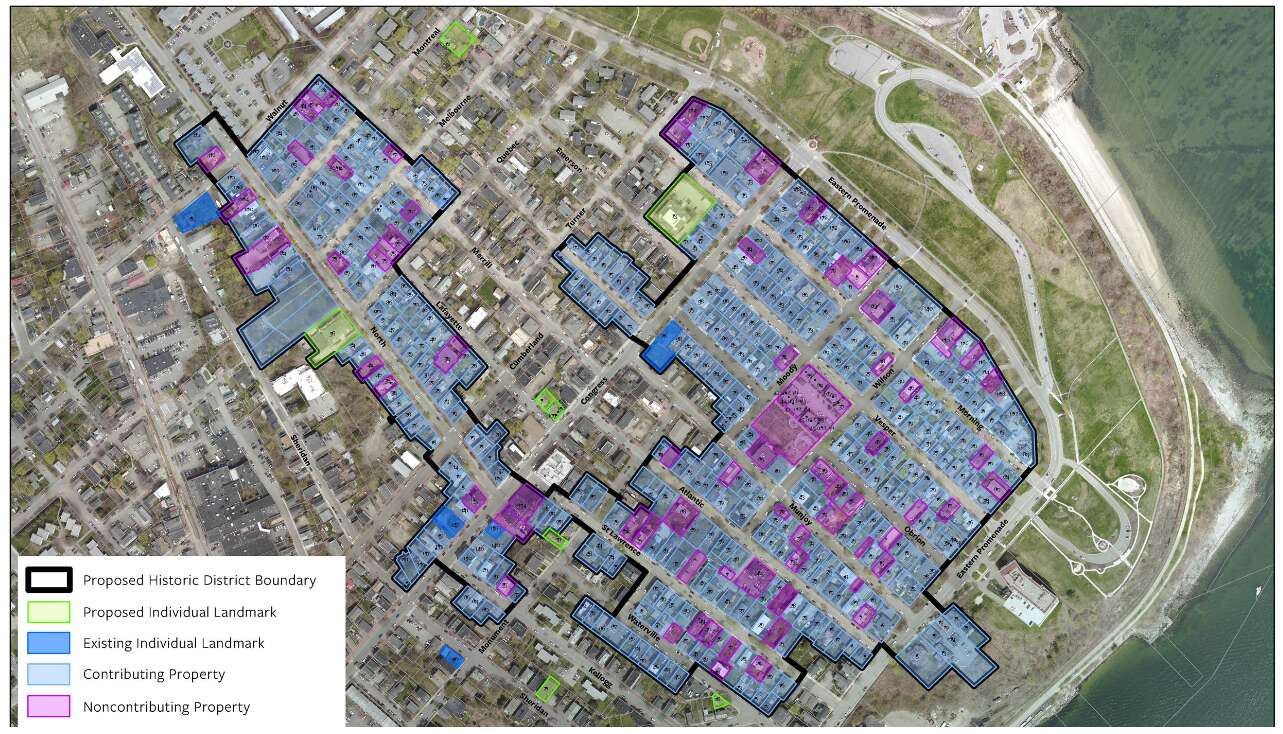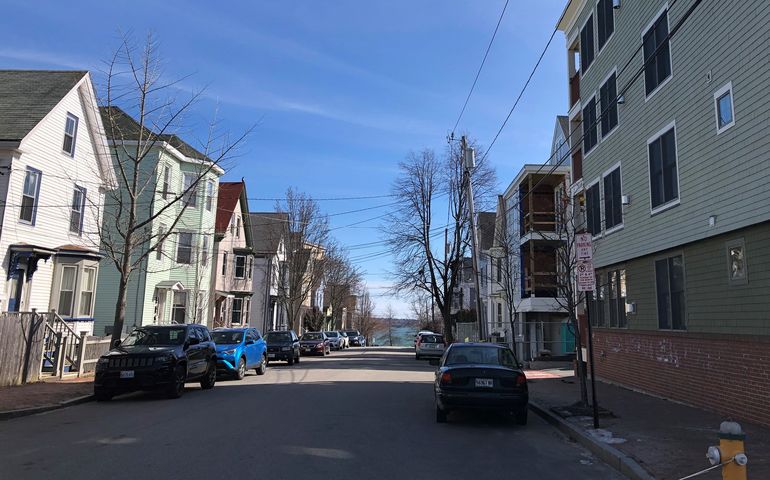
Portland board will vote on Munjoy Hill historic district after five-month delay
 Photo / Maureen Milliken
The Portland Planning Board is set to vote on a Munjoy Hill Historic District that will include more than 400 properties, most of them residential.
Photo / Maureen Milliken
The Portland Planning Board is set to vote on a Munjoy Hill Historic District that will include more than 400 properties, most of them residential.
More Information
The Portland Planning Board's vote on creating the Munjoy Hill Historic District, originally scheduled for March 17, will take place Tuesday.
The vote on establishing the district, which would include nearly 400 "contributing" properties in the neighborhood, will be preceded by a continuation of the March public hearing. If approved, the district plan will go to the City Council for a final decision. The meeting, to be held via Zoom, is scheduled for 6 p.m.
The designation, along with individual landmark designations for five buildings, was approved by the city's Historic Preservation Board in November.
The move is spurred by concerns about modern building development on the hill at the eastern end of the Portland peninsula, accompanied by a spate of tear-downs several years ago. The proposed designation comes after a 2018 conservation overlay that slowed construction until issues could be worked out.
The proposed district includes 427 parcels, representing 49% of Munjoy Hill’s building stock, according to the city. Most of the property is in a R-6 residential zone, but it also includes 10 buildings in the neighborhood’s B-1 or B-1b business zones. Two of those buildings are previously designated landmarks.
Of the proposed district parcels, 376, or 88%, are classified as contributing, which means that they meet the criteria as far as age, and also have retained historic features. The remaining 51 parcels are noncontributing.
Property owners of contributing structures would have to get approval from the city before making any improvements or alterations that can be seen from a public way.
The designation is supported by preservation groups, including Greater Portland Landmarks, as well as the Munjoy Hill Neighborhood Association. But the change is opposed by a variety of property owners who are concerned about restrictions on repairing and renovating homes that are more than a century old, as well as the growing lack of affordable housing in the city.
If approved, property owners of contributing buildings would have to get city approval for:
- Alterations, repair or replacement of windows, doors, storefront modifications, architectural detailing, masonry work (including re-pointing, sandblasting, chemical cleaning; waterproofing, painting where the masonry has never been painted, or removing paint where the masonry historically has been painted), installing or replacing visible roofing or gutters; substitution of original building materials, altering or replacing accessory structures, including garages.
- Additions and new construction, including rooftop additions, dormers or decks; accessory structures; exterior access stairs or fire escapes; antennas and satellite dishes; solar collectors or wind generators.
- Exterior utilities and lighting, including mechanical, plumbing, and electrical, vents.
- Signs and awnings, as well as related lighting
- Site alterations including modifying features other than vegetation, including parking lots, fencing, retaining walls, driveways, paving, and regrading
- Demolition or partial demolition of a “contributing” structure. Approval is not required to demolish a noncontributing building.
Residents who have spoken in favor of it said it would add structure to development in the neighborhood, protect its historic culture, provide guidelines for changes to buildings, slow demolition of older buildings as well as slow construction of "big boxy" multi-family buildings. Many said they're also concerned about the rise in housing values, and the number of luxury condos and apartments in the former working-class neighborhood.
Opponents have said establishing a district won't stop demolition of existing buildings or construction of big-box condos. Some critics also take issue with the fact that owners of contributing structures — those that are considered to have retained enough historic features to be considered part of the district — would have to get approval from the city before making any improvements or alterations that can be seen from a public way.









0 Comments